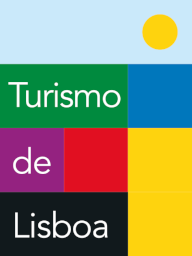Ruta del Bacalao
Historia del Bacalao
Historia del Bacalao
Discovered by the Vikings, who captured it abundantly in the cold seas of the Nordic countries, codfish has been considered “the bread of tides” in Portugal, and is now known as its “faithful friend”.
The long and curious relationship of this seafaring nation with a dried fish that isn’t captured along its own coast starts in the 14th century, after commercial treaties with England which predicted the exchange of salt for codfish.
In the mid-1500s, during the Portuguese discoveries, an expedition headed to India discovered Newfoundland. And so began Portuguese cod fishing.
Portuguese fishermen were eventually driven out by English and French corsairs, who dominated fishing activities in the region.
For centuries this fish was a food exclusive to the royal house and aristocracy, only spreading to the interior of Portugal in the 19th century due to ease of conservation and transport.
On the 9th of July 1920, the Companhia Portuguesa de Pesca (Portuguese Fishing Company) is founded by four small shipowners from the trawling trade, each of them owning a single vessel. Setting up headquarters in the old facilities of the Fábrica de Algodão da Companhia Lisbonense (“Lisbon Company Cotton Factory”), former São Paulo Convent, in Olho de Boi, Almada, the company appeared in the context of an expanding canning and fishing industry.
However, exponential growth of codfish consumption begins with the Estado Novo.
Up to that point Portugal imported most of the codfish it consumed. Portuguese fishing companies didn’t work efficiently, and the sector was disorganized, irregular and lacked investment. All while the population went hungry.
To reduce foreign dependency and guarantee the country’s food supply, Salazar centralizes the organization of fishing activities in the State, encourages the creation of cooperatives and cartelizes supply. This is how the famous Codfish Campaign begins in 1934, aiming to turn this fish into Portugal´s staple food.
Sailing from Belém, Lisbon, the cod fishing ships were luggers, sailing ships and motor-ships, which towed dories, small wooden boats used for line fishing, and had the capacity to carry between 900 and 950 tons of cod.
This type of fishing was a hard and dangerous job. Fishermen had to face wind and swell, the risk of hitting an iceberg and frequent fog. Many didn´t make it back to the cod fishing ships and died at sea. The transition to trawling with modern boats was tardy and slow, which eventually led to the sector’s demise.
During World War II, Portugal maintained its fishing activity. When crossing the Atlantic Ocean, two cod fishing ships, “Maria de Gloria” and “Delães” were sunk by Nazi submarines. An agreement with the Allies would determine that these Portuguese cod fishing ships be painted white to signal Portugal´s neutrality in the conflict and allow them to safely sail the Atlantic, thus becoming known as the “White Fleet”.
The “Creoula”, launched in the Tagus river on the 10th of May 1937, was used until 1973 in cod fishing campaigns off Newfoundland and Greenland, and set a sailing track record equivalent to more than 20 round-the-world trips. Currently used as an instruction ship by the Portuguese Navy, it is one of the fleet’s last survivors, alongside “Santa Maria Manuela”, “Argus” and “Gazela”.
After the conflict, cod fishing became an emblem for the corporate system. In 1957, Portugal is already the largest salt codfish producer in the world, and the import substitution level reaches nearly 80%. By this time, wheat and codfish were the commodities with the greatest impact on both the country’s diet and its trade balance.
Historically, the codfish curing process started on board the cod fishing ships, where it was salted immediately. After reaching land, the fish was washed to remove all the salt and dried until dehydrated. The codfish drying process took place outdoors in the Algarve, on the South Bank of the Tagus, in Setúbal, Figueira da Foz, Aveiro and Viana do Castelo. It was generally a job performed by women.
With an area of 360 hectares, the Samouco Salt Pans in Alcochete were the main saline farming centre in the Lisbon region between the 1930s and 1970s. The salt left there in boats destined for cod salting in distant Newfoundland or warehouses in Cais do Sodré, which supplied the capital city.
The Sociedade Nacional de Armadores de Bacalhau (National Society of Codfish Shipowners) was one of the three factories in Alcochete where codfish was dried and prepared. Today only the building remains, right at the entrance of the complex.
1974 was the last year a Portuguese cod fishing fleet set sail for Newfoundland, coinciding with the fall of the dictatorship in Portugal.
Nevertheless, we still love codfish today and it is said we have 1001 ways of cooking it. Presently, 70% of codfish comes from Norway and the Portuguese are responsible for consuming 20% of the global catch, always taking sustainable consumption, climatic change and gastronomic versatility into consideration.
